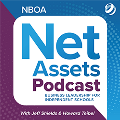
NBOA President and CEO
If you’re like me, you think a great deal about your management style and how you can be more effective as a team leader, mentor and coach to bring out the very best in others. A recent Harvard Business Review article, “Managers Can’t Be Great Coaches All by Themselves,” identifies four distinct “coaching styles” and their efficacy regarding staff performance. Here is my shorthand on these styles and how they play out within independent school business operations. Where do you see yourself fitting in?
- The teacher manager is likely to come to the business officer role with a strong background in business, finance and operations. You draw from your skills and experiences to give staff advice-oriented feedback so they can perform their jobs successfully.
- The always-on manager stays on top of your staff’s development. You may have performed every role within the business office and therefore have a keen understanding of each. You might well be your HR director’s dream manager because you are constantly giving feedback; you make doing so a daily part of your job. You don’t wait for performance reviews to give helpful feedback; you provide it all the time.
- The connecter manager is generous with specific feedback when possible but also happy to facilitate access to others who can help identify solutions. You identify individuals throughout the school as potential resources and guide your staff to develop these connections for themselves, so they can better perform their roles on behalf of the school.
- The cheerleader manager has a more of a hands-off approach to management, but you are consistently positive, supportive and encouraging to help staff identify their own opportunities for professional development. In school vernacular, this manager encourages “agency” among staff to explore the areas they believe they need most to develop to be successful. (I relate to this management style the most.)
One of my pet peeves about staff supervision is that it often has just one line on a job description, yet it takes up the most time, if it’s done well. Moreover, it is among the most important skills a manager can have and a key reason you are in your leadership position — to bring out the best in your staff. Here’s what I found most illuminating about the HBR research: It doesn’t matter how much time you spend developing your staff. What does matter is the quality of the time you spend, or how you conduct those staff meetings and one-on-ones. I’m thinking long and hard about this and plan to invest more planning time into both of these areas in the coming year.
My second takeaway is that the hypervigilant, always-on approach to management can do more harm than good. Instead, the connector manager is by far the most effective at developing high-performing employees. The reason is simple. It is impossible for you to be the best resource on everything. It’s more important to ask good questions, provide the best feedback you can and point your staff in the right direction. By connecting your staff to multiple resources within your school, you help them be far more likely to be high performers, according to the research.
Your entire school is a resource. Keep this in mind as you think about how you might better support your staff. Not only will it allow you to focus your energies more strategically, but it will help ensure that the business office and business operations are integral to the entire fabric of your school. That’s a good thing.


